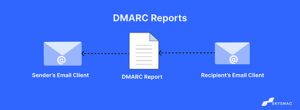What is SPF? What is DKIM? How do they help in deliverability?
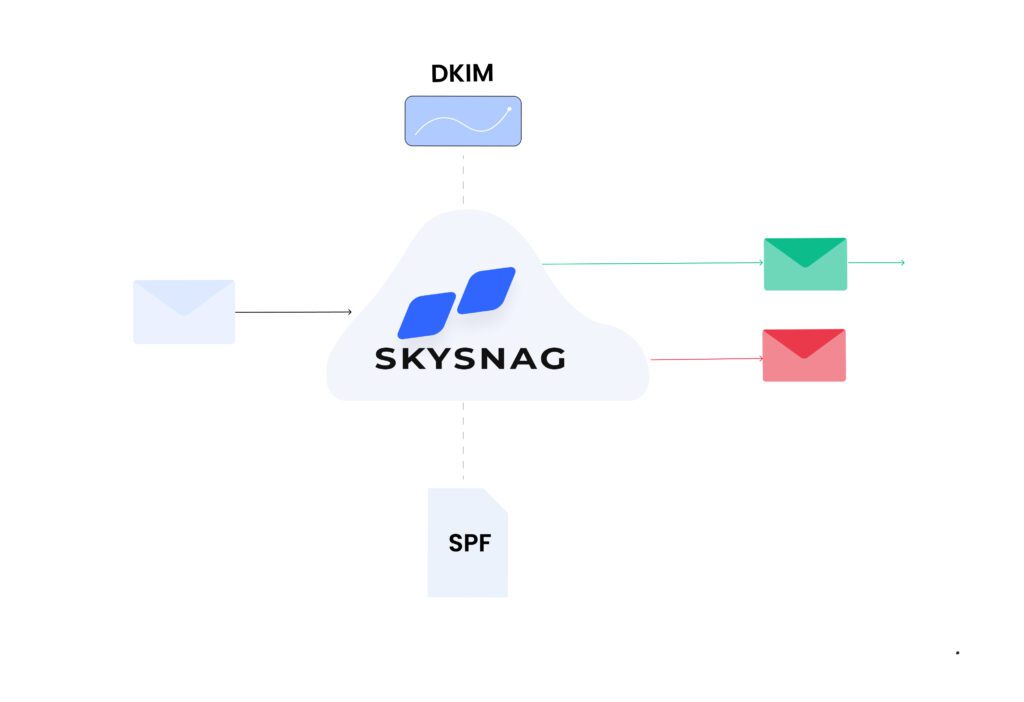
SPF & DKIM acronyms might sound unfamiliar, technical, and scary. Maybe you have heard of them yet never cared enough to check what they are.
Either way, if you want to have control of your email deliverability, it is important to learn more about these protocols.
What is SPF? How does it work
SPF is an email authentication standard that was introduced to prevent any misusage of your domain , and protects senders and recipients from spoofing, phishing & spam. By publishing an SPF record in your DNS, you provide a public list of IPs allowed to send an email on your behalf which can be used by the email recipient’s server to cross-check if the email received from your domain is from an IP specified in your SPF record
In the SPF record, you can specify all third-party senders on your behalf, like Drip for email automation.
Doing that allows receiving mail servers to check if messages originate from an IP specified in your SPF record.
If you use separate IP addresses and subdomains to send your marketing vs. transactional emails ( which we recommend), you must include both IPs as allowed sending sources.
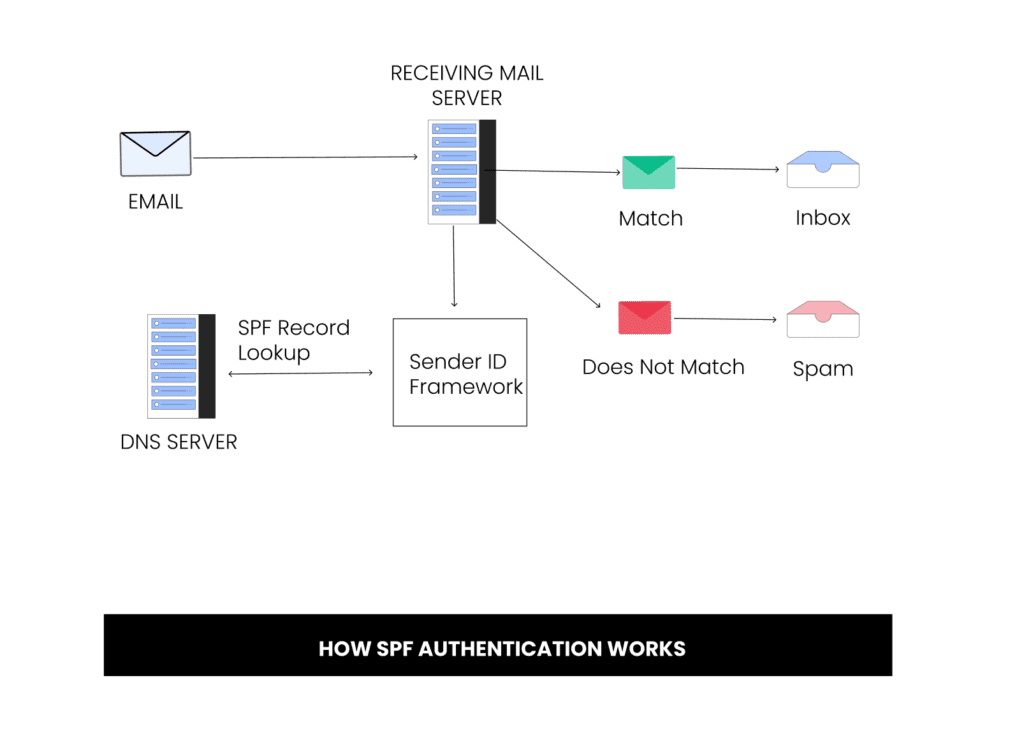
Why do I need SPF?
You can still send emails without setting up an SPF record, but having an SPF record will allow ISPs to verify your emails which is bound to increase your deliverability.
SPF will not solve every deliverability problem but combined with DKIM & DMARC, it may improve your deliverability and prevent abuse.
What is DKIM?
DomainKeys Identified Mail (DKIM) is an email authentication method designed to detect email spoofing by providing a mechanism to allow receiving mail exchangers to check that incoming mail from a domain is authorized by that domain’s administrators. DKIM defines a set of DKIM-Signature header fields that allow a signing domain to assert responsibility for a message by affixing a digital signature to it.
The signature is used to verify that the message has not been modified during transport and that the signer is authorized by the sending domain to sign the message. DKIM is intended to address the problem of spoofed spam messages, where the message appears to come from a trusted source but is actually from a malicious sender.
By verifying the DKIM signature, the receiving mail server can determine whether the message is from a trusted source and whether it has been modified in transit.
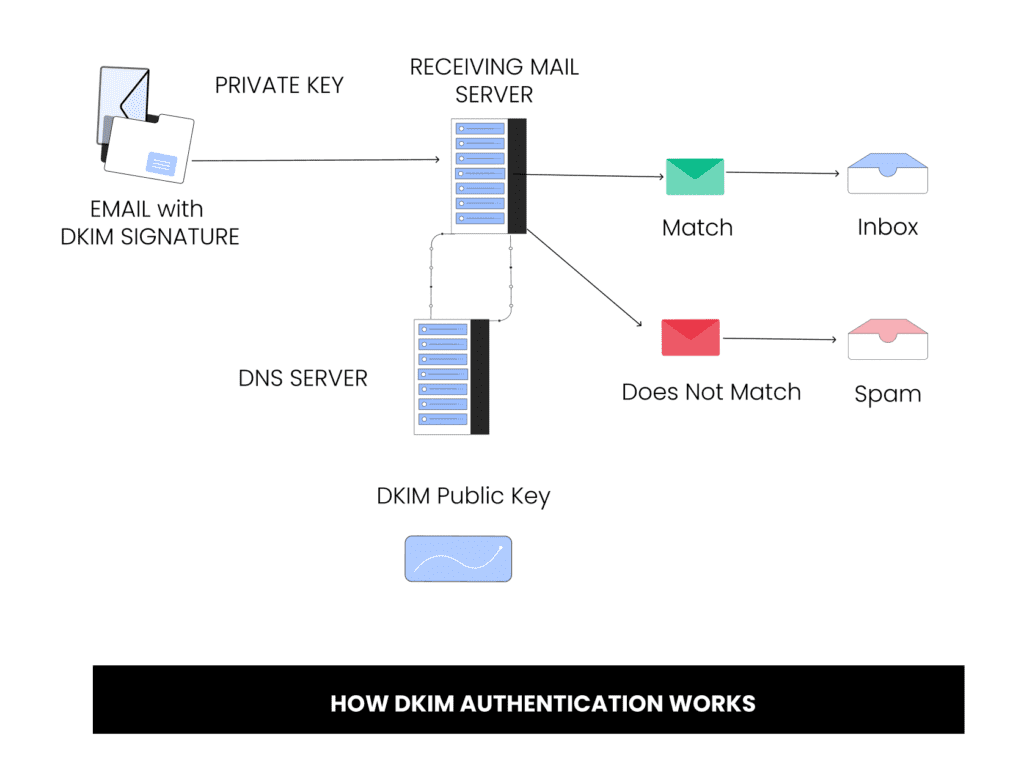
What is DMARC?
DMARC (Domain-based Message Authentication, Reporting & Conformance) is a standard that prevents spammers from using your domain to send email without your permission — also known as spoofing. Spammers can forge the “From” address on messages so the spam appears to come from a user in your domain. A good example of this is PayPal spoofing, where a spammer sends a fraudulent email to you pretending to be PayPal in an effort to obtain your account information.
DMARC ensures these fraudulent emails get blocked before you see them in your inbox. In addition, DMARC gives you excellent visibility and reports into who is sending emails on behalf of your domain, ensuring only legitimate emails are received.
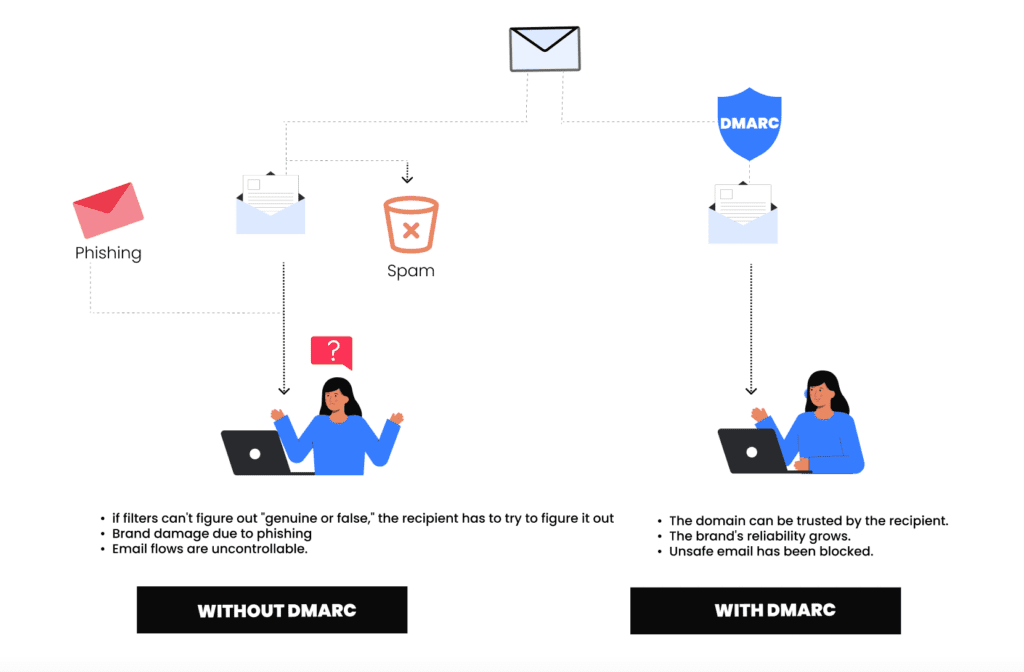
What are the benefits of implementing DMARC?
- Reduced spam and phishing emails
- Improved email deliverability
- Increased email security
- Protection from spoofed emails
- Ability to track and monitor email activity
Does DMARC improve deliverability?
DMARC allows you to see whether emails sent using your domain are properly authenticated using SPF and DKIM. This enables you to identify and fix any authentication issues that can affect the deliverability of your emails.
Preventing spoofed emails from reaching users can lower spam complaints and protect your domain‘s reputation with ISPs. ISPs will see your domain differently when authenticating email protocols.
We have seen an increase from 5 to 10% in deliverability with companies with DMARC enforced.
What if my deliverability rates are already high? What is the use of DMARC then?
Even if you enjoy high deliverability rates right now, spoofers might be using your domain without your knowledge to send out emails. With time, ISPs might flag your domain and you might end up on a blacklist. Enforcing DMARC early on will ensure your domain is only being used by authorized parties and will help you maintain high deliverability rates.
Skysnag, What we do?
Setting up these authentication protocols is a hectic job to do and requires technical expertise. Their complex setup and monitoring have led to over 90% of domain names with unsuccessful setups.
Skysnag has automated the whole setup, monitoring, and enforcement process. Most of the current tools on the market are only reporting softwares that require admin intervention, this is why most of domains are still unprotected. In addition, if you send emails from sub-domains, you are most likely to miss the setup for your sub-domain.
With Skysnag, every step of DMARC enforcement is automated. We have designed the software to be the easiest software to use with the least intervention from admins. You sign up, follow the steps and the software will notify you if there is anything needed from your side.

